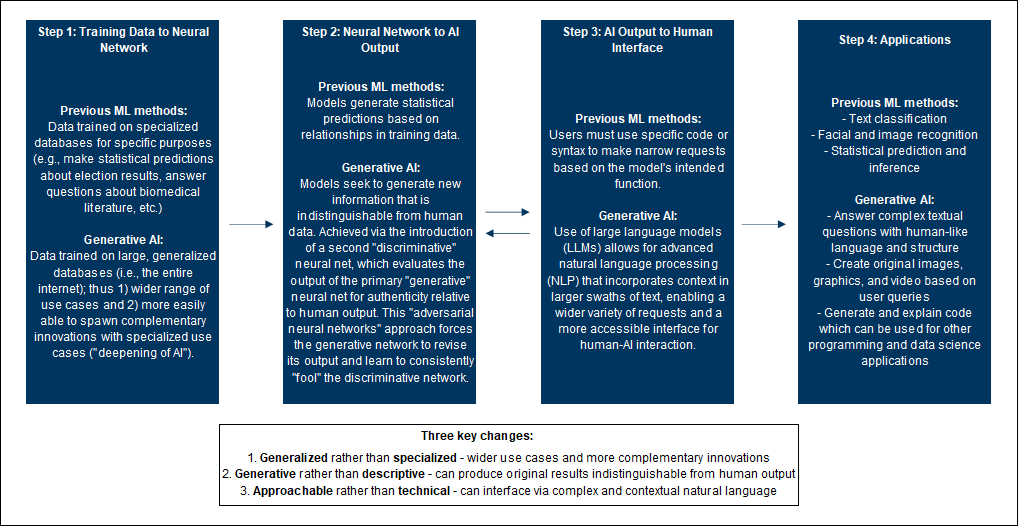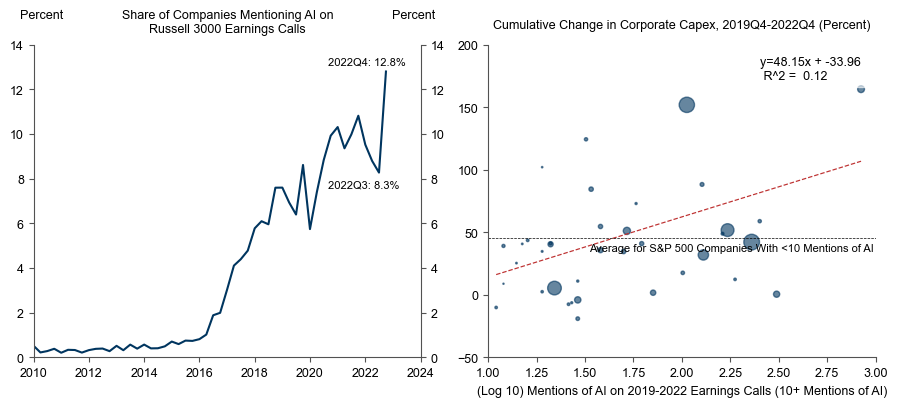AI's Tsunami of Change: Labor Markets, Economies, and Adaptation
A monumental shift is on the horizon, poised to reshape the global economy in profound ways—the rise of artificial intelligence (AI) is set to create seismic changes in the job market. The futuristic allure of AI has been a staple in both fantastical films and academic discussions for decades. However, the recent surge in accessible AI tools has transformed this futuristic speculation into an imminent reality, arriving even sooner than anticipated. This technological revolution is now poised to disrupt economies worldwide.

A report from Goldman Sachs in March highlighted that over 300 million jobs across the globe stand to be affected by AI, while McKinsey, a prominent consulting firm, estimated that by 2030, around 12 million Americans will need to transition to new fields. This wave of "creative destruction," as economist Joseph Schumpeter termed it, will sweep away numerous existing businesses while simultaneously fostering the growth of novel industries. Amidst this transformation, the potential for economic gain remains promising, with both nongenerative and generative AI projected to contribute between $17 trillion and $26 trillion to the global economy, and new job opportunities will emerge alongside the loss of old ones.
The crescendo of this technological wave is only beginning, a disruption expected to reverberate through labor markets and economies worldwide, echoing the profound influence of the industrial revolution and the internet's ascent. These changes could elevate living standards, bolster productivity, and expedite economic prospects. However, this optimistic outlook hinges on adequate preparation by governments, corporate leaders, and workers, as failure to ready for this impending AI revolution could yield painful consequences.
The analogy with the advent of the internet underscores the difficulty of predicting transformative technology adoption. The internet's initial effects were gradual, then sudden, as exponential curves are wont to be. AI's trajectory, in contrast, is discernible far more rapidly. McKinsey's projection of advanced large language models like GPT-4 becoming available by 2027 was outpaced by their actual arrival. Major players like Microsoft and Amazon hastened to incorporate generative AI into their operations. This accelerated pace is echoed by projections that between 2030 and 2060, half of current work tasks could be automated, a timeline nearly a decade ahead of previous estimations.
The ensuing AI adoption will trigger cascading effects on employment. The World Economic Forum predicts that while AI might lead to the creation of 69 million jobs, it could also render 83 million obsolete within the next five years. The very nature of work itself will evolve as approximately 44% of core job skills undergo change. Unlike previous automation technologies, which mostly affected low-skilled workers, AI puts highly educated professionals at risk. The estimated 644 to 997 million global knowledge workers, encompassing a wide range of occupations, may find their jobs automated or altered.
Yet, the AI-induced transformation won't necessarily lead to widespread unemployment. Rather, it will precipitate a substantial disruption, impacting wages and labor demand across various fields. Stanford economist Erik Brynjolfsson aptly noted that the shift will necessitate substantial labor reallocation and reskilling. History has shown that technological innovation engenders job displacement but also fosters new opportunities, as seen when ATMs increased bank teller numbers.
The revolution's enormity implies that some displaced jobs might not even be missed, much like the human alarm clock of yore. AI's productivity-boosting potential resonates with the historical trends of technology's positive impact on labor productivity. While there are concerns that AI could suffer the same productivity paradox as computers, the current technological maturity and existing infrastructure could facilitate a swifter impact. AI's integration with preexisting technology is anticipated to unlock exponential productivity gains across industries.

The growth trajectory driven by AI-induced productivity is central to its long-term influence on the economy. Estimates suggest that generative AI could raise annual US labor-productivity growth by nearly 1.5 percentage points, akin to the transformative impact of previous technologies like electric motors and personal computers. Such gains, if realized, could translate to substantial increases in GDP and economic contributions.
Nonetheless, as AI's influence surges, the workforce's transformational pace will outstrip education and preparation efforts. The US workforce education system is inadequately equipped to address the needs of modern workers, much less those of an AI-centric economy. Addressing this discrepancy requires substantial investment and innovative approaches, as seen in the Danish "flexicurity" model and Singapore's retraining initiatives. Public-sector policies should complement private-sector investments in retraining, a critical step toward preparing the workforce for the AI revolution.
The impending AI revolution will reshape the global job market and economy in ways akin to historical industrial revolutions. The wave of automation and disruption holds both challenges and opportunities. Careful preparation through policy initiatives, retraining efforts, and public-private collaborations will be essential to surf this wave successfully, ensuring that the AI-powered future leads to economic prosperity and stability.



Comments
Post a Comment